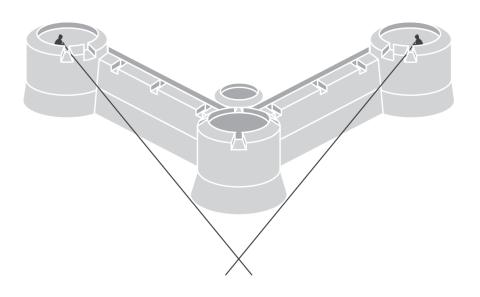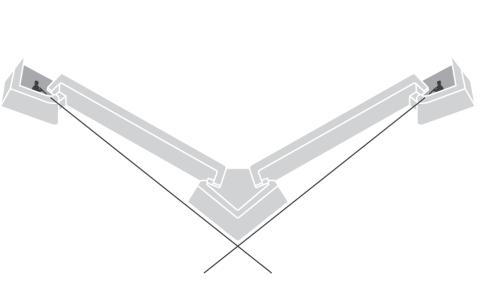The history of fortification is linked to the evolution of the means of attack and the progress of artillery. Following the generalization of the metal ball at the end of the 15th century, Italian engineers designed a new type of defense: the bastioned system. It was based on a geometrical layout of the ramparts that completely eliminated blind spots and on the use of the bastion to replace the medieval tower.
In the 16th century, the medieval tower was replaced by the bastion, which eliminated all blind spots.
It is a pentagonal structure pointing two faces towards the attacker, attached to the curtain walls by two flanks and inside by its throat. Dimensions and shapes are calculated according to the range of fire of the firearms.
The fortifications thus had a star-shaped plan, with each branch constituting a section of wall facing the attacker. This system, continued by Vauban, is made of imposing earthen embankments supported by walls, called ramparts, all of which are capable of resisting the impact of cannonballs and of supporting numerous cannons for its defense. Its effectiveness no longer lies in the height of the walls but in the thickness of the earth accumulated behind them.
Vauban's three supposed systems: developed by successive touches, they are distinguished by the progressive multiplication of external works in order to reinforce the obstacles for the assailant.
Vauban will have to change the conception of his fortifications. He gradually increased the size of the fortifications on the ground. External works were added, ravelins and demi-lunes, then horned and crowned works and detached forts. If his thought was theorized in three systems after his death, only the adaptation to the terrain, common sense and experience counted for him.
This explains, on the one hand, why he always refused to write a treatise on fortification and, on the other hand, the great variety of geometrical forms he used.
Throughout his career, Vauban created a veritable "iron belt" around the kingdom and built or developed no less than 165 works to guarantee its protection. On many sites, he adapted the existing medieval fortifications. To avoid attacks from the sea, he developed standard plans for forts at sea: compact, with two levels of fire, with an observatory tower or lighthouse.
In the plains of northern France, Vauban used water as a means of defense. He planned numerous hydraulic works and gigantic reserves allowing him to flood the land around the fortress in case of siege.
Vauban's « pré carré »
Between the Meuse and the North Sea, in the absence of natural borders and given the strategic importance of this border in northeastern France, Vauban developed his "pré carré", a double line of strongholds linked by canals.



